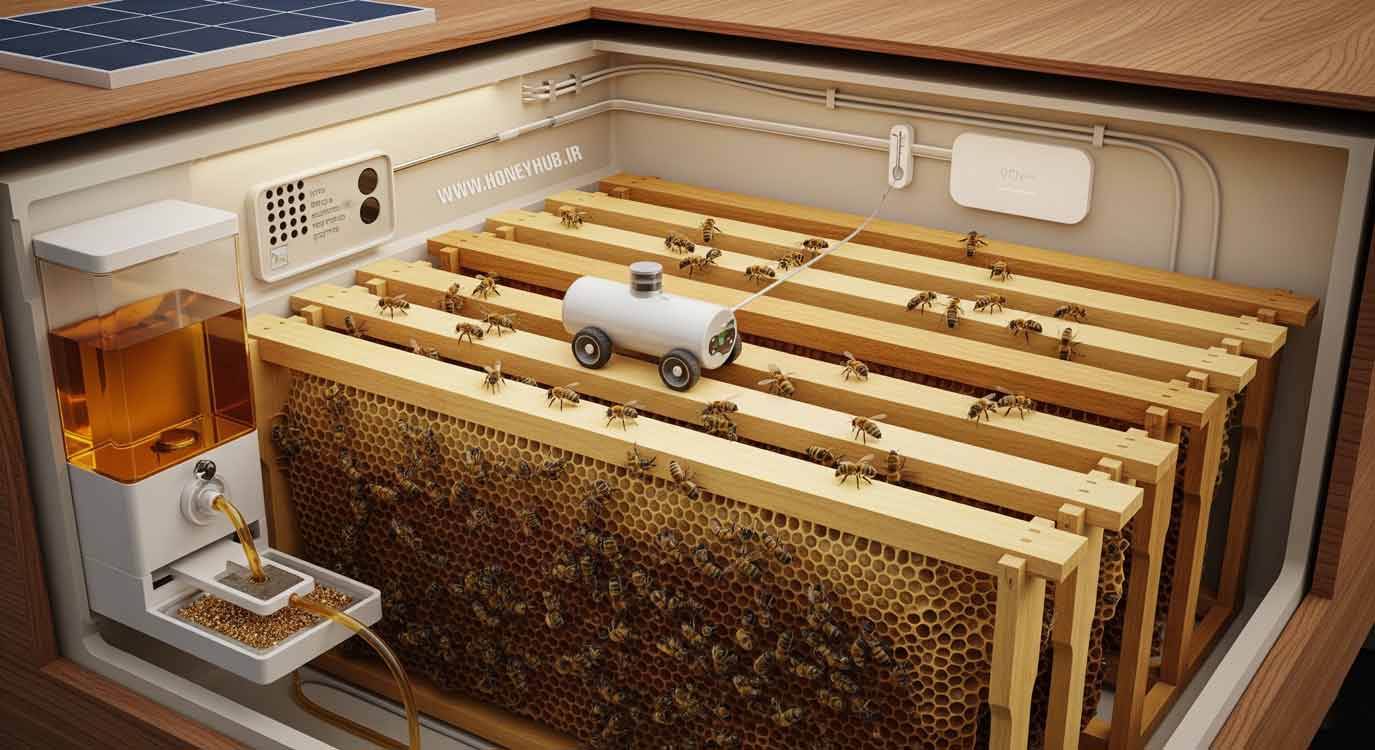Does your mozzarella refuse to stretch or just burn? The secret is science. From "pasta filata" to the crucial role...
In recent decades, the world has witnessed a quiet but alarming environmental crisis: the widespread destruction of honey bee colonies, a phenomenon known as Colony Collapse Disorder (CCD). This crisis doesn't just threaten natural ecosystems; it's shaking the very foundation of global food security. Amid this immense challenge, advanced technologies like robotic beekeeping and artificial intelligence (AI) have emerged as a promising solution. But how exactly does this tech work? What are its benefits? And can it really be the hero our bees need?

The Roots of the Crisis: Why Are Bees in Danger?
To understand the importance of robotic beekeeping, we first have to grasp the depth of the crisis we're facing. Bee mortality isn't a simple issue; it's the result of a complex web of interconnected factors:
- Pesticides and Chemicals: The widespread use of pesticides, especially neonicotinoid compounds that are toxic to insects' nervous systems, is a primary cause of bee deaths. These chemicals don't just kill bees directly; they impair their ability to navigate and find food.
- Diseases and Parasites: Parasites like the Varroa destructor mite are a major threat to colonies. These mites feed on bees' hemolymph, weakening them and transmitting deadly viruses. The Israeli acute paralysis virus (IAPV) is one such disease that is increasingly causing colony collapse.
- Climate Change and Habitat Loss: Unpredictable temperature shifts, droughts, and floods disrupt the bees' life cycle. Urban sprawl and industrial agriculture also lead to the loss of native flowers and plants, which are the bees' main food sources.
- Traditional Beekeeping: In traditional beekeeping, problems are often detected too late. A beekeeper might only inspect their hives every few weeks, by which time damage to the colony from disease or lack of food can be irreversible.
Robotic Beekeeping: The Fusion of Biology and Technology
The technology of robotic beekeeping was created to tackle these very challenges head-on. These systems use a combination of the Internet of Things (IoT), advanced sensors, and artificial intelligence (AI) to provide 24/7 monitoring and precise hive management. A standout example of this technology is the smart hives designed by the company Beewise, known as "Beehomes."

These modern hives are more than just a shelter for bees; they're a living laboratory. Sensors constantly collect environmental data like temperature, humidity, CO2 levels, and even the vibrations inside the hive. Using computer vision, robots can also observe and analyze the bees' behavior.
At the core of this system is AI. AI algorithms process this massive amount of data to detect unusual patterns. For example, if the hive's weight drops rapidly, the AI deduces the bees are facing a food shortage and automatically injects a sugar and water solution through an internal robot. If Varroa mites or signs of disease are detected, the system precisely and accurately administers the necessary medication, without harming the colony.
The Economic and Environmental Benefits of Smart Beekeeping
Robotic beekeeping doesn't just help bees survive; it also brings significant economic advantages:
Increased Productivity
Precise, real-time management means healthier colonies and, as a result, more honey and pollen production. Studies have shown that smart-managed colonies can produce several times more product than traditional ones.
Reduced Losses
The ability to quickly detect diseases and other issues dramatically reduces colony mortality rates. This allows beekeepers to invest in their business with greater confidence.
Lower Labor Costs
Many repetitive, physical tasks of beekeeping, like feeding and treatment, are automated. This frees up beekeepers to focus their time on more strategic duties.
Beyond economic gains, this technology's role in environmental conservation is crucial. By preserving bee populations, robotic beekeeping directly contributes to global food security. Over 70% of the world's main agricultural crops, including fruits, vegetables, and protein products, are heavily dependent on bee pollination. Without them, plant biodiversity and food production would decline drastically.
| Feature | Traditional Beekeeping | Robotic Beekeeping (e.g., Beehome) |
|---|---|---|
| Annual Mortality Rate | Around 35% to 50% | Less than 10% |
| Honey Production (per hive) | Variable and lower | Up to several times more |
| Monitoring | Periodic and manual | Continuous, 24/7 with AI |
| Problem Management | Reactive (after a problem occurs) | Proactive and immediate |
Challenges and the Future of Robotic Beekeeping
Despite all the benefits, this technology is still in its early stages and faces challenges. The high initial cost to purchase and install smart hives limits access for smaller beekeepers. There are also concerns about data security and a reliance on complex systems.
However, progress is happening fast. With mass production and reduced costs, robotic beekeeping is expected to become a standard tool in the industry. Furthermore, the development of software platforms that collect bee data for scientific research could lead to a better understanding of bee biology and the fight against diseases.
🍯 Taste the Difference with Our Natural Honey!
Our honey is the result of dedicated beekeepers and the highest-quality hives. By purchasing from us, you support your health and the sustainability of the beekeeping industry.
🛒 Shop Now and Feel the Difference!













Latest comments